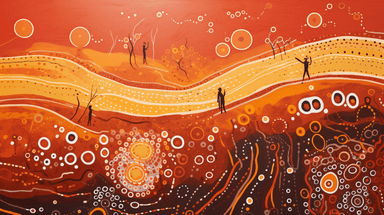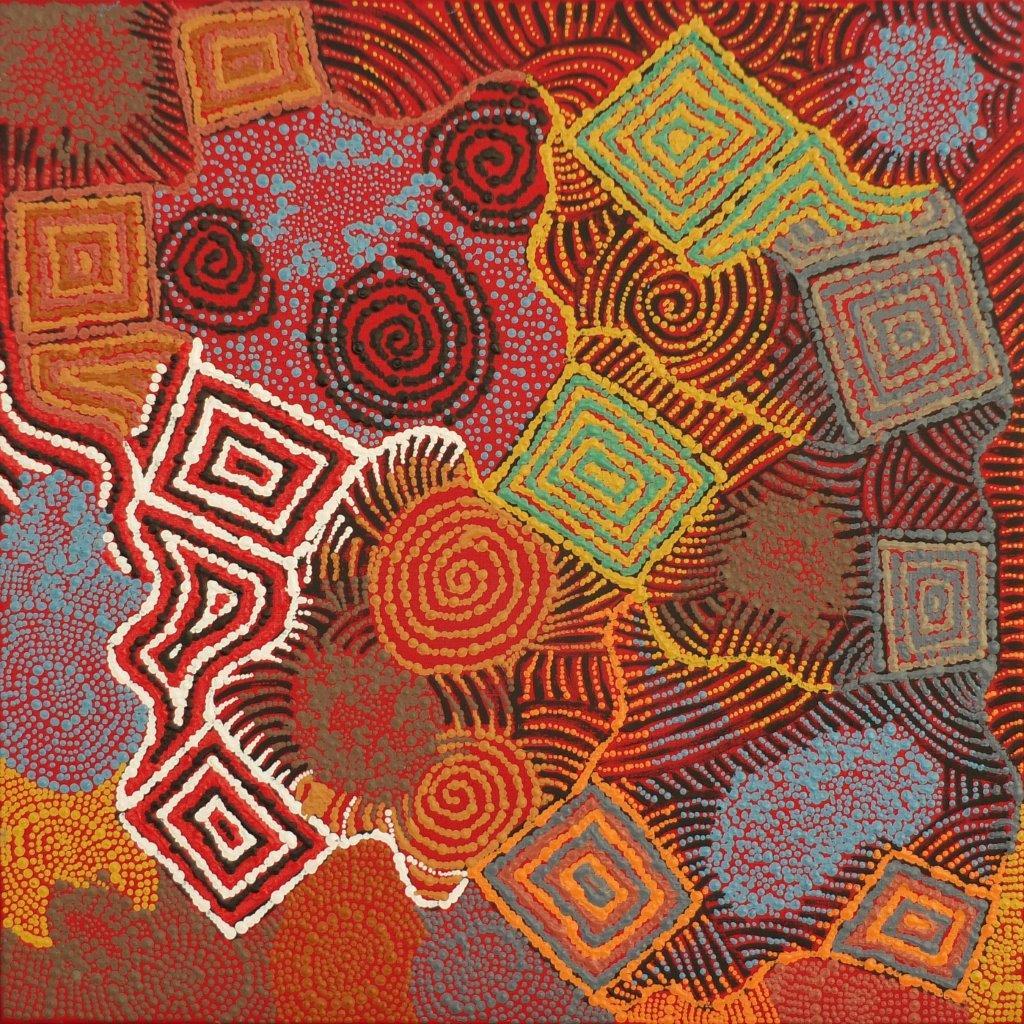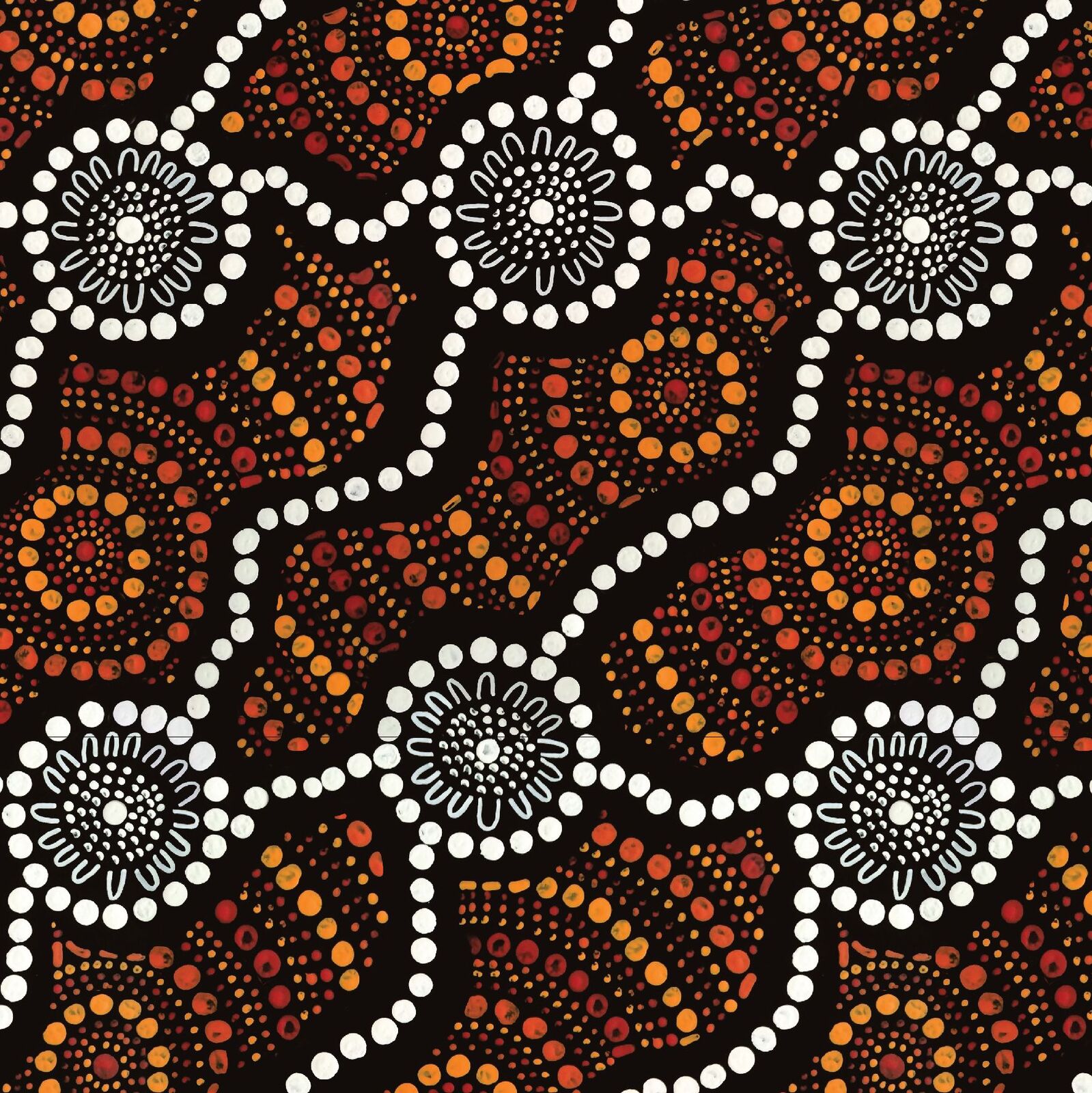Unveiling the Timeless Tapestry: Dreamtime and its Profound Influence on Aboriginal Art
Unveiling the Timeless Tapestry: Dreamtime and its Profound Influence on Aboriginal Art

For millennia, the vibrant and intricate art of Aboriginal Australia has captivated the world with its profound connection to the land, its stories, and its people. At the heart of this artistic tradition lies a concept that transcends time and space: Dreamtime, also known as Tjukurrpa. It’s not simply a dream, but a fundamental belief system that forms the very foundation of Aboriginal culture, spirituality, and artistic expression.
Dreamtime: The Unseen Fabric of Existence
Related Articles: Unveiling the Timeless Tapestry: Dreamtime and its Profound Influence on Aboriginal Art
- Firearms In The Hands Of Tradition: A Hypothetical Exploration
- Inviting Nature’s Tiny Architects: A Guide To Introducing Native Bees To A New Hive
- A Taste Of Australia: Exploring The Unique Fruits Native To The Land Down Under
- Unveiling The Hidden Wealth: Exploring The Richest Aboriginal Australians
- Julpe: Unraveling The Meaning Behind The Aboriginal Name For "Wise Man"
Dreamtime is a complex and multifaceted concept, often described as a period of creation, a realm of ancestral beings, and a timeless narrative that binds the past, present, and future. It’s a time when the ancestral beings, powerful spirit entities, shaped the land, created the animals, plants, and natural features, and established the laws and customs that govern Aboriginal life.
The Ancestral Beings: Architects of the Land
These ancestral beings, often depicted in Aboriginal art, are not deities, but rather powerful entities that embody the essence of the land. They are the creators, the storytellers, and the custodians of knowledge. Their actions and journeys are etched into the landscape, forming the basis of Dreaming stories that are passed down through generations.
The Dreaming: A Tapestry of Stories
The Dreaming is not a single story, but a vast and interconnected network of narratives that describe the creation of the world and its inhabitants. These stories are not mere tales, but living histories, laws, and spiritual connections to the land. They explain the origins of everything, from the formation of mountains to the behaviour of animals, and guide the social and spiritual life of Aboriginal people.
The Role of Art in the Dreaming
Aboriginal art is not simply decorative; it’s a visual manifestation of the Dreaming. It’s a powerful tool for storytelling, preserving knowledge, and connecting with the ancestral beings. Through intricate designs, symbols, and colours, artists depict the journeys of the ancestral beings, the creation of the land, and the laws and customs that govern their lives.
The Significance of the Land

The land itself is sacred to Aboriginal people, as it is the physical embodiment of the Dreaming. Every rock, every tree, every waterhole holds a story, a connection to the ancestral beings, and a responsibility for its care. Aboriginal art, therefore, is not just about aesthetics; it’s about preserving the land, its stories, and its spiritual significance.
Understanding the Language of the Land
To truly appreciate Aboriginal art, one must understand the language of the land. The intricate designs, the vibrant colours, and the symbols all hold meaning. They are not arbitrary patterns, but carefully crafted representations of the Dreaming stories, the ancestral beings, and the laws of the land.
Examples of Dreamtime in Aboriginal Art
Here are some examples of how Dreamtime is depicted in Aboriginal art:

- Rock Art: The most ancient form of Aboriginal art, rock art, features intricate designs, symbols, and figures that depict the journeys of the ancestral beings, the creation of the land, and the stories of the Dreaming.
- Sand Drawings: These temporary art forms are used in ceremonies and rituals to tell stories, teach lessons, and connect with the ancestral beings.
- Body Painting: Body painting is a powerful form of art that allows individuals to connect with the ancestral beings, celebrate ceremonies, and express their cultural identity.
- Ceremonial Objects: Objects like shields, spears, and boomerangs are often decorated with intricate designs that represent the Dreaming stories and the ancestral beings.
- Contemporary Art: Contemporary Aboriginal artists continue to explore the themes of the Dreaming in their work, often incorporating traditional techniques and designs with modern materials and concepts.

The Importance of Cultural Sensitivity
It’s crucial to approach Aboriginal art with respect and cultural sensitivity. The art is not simply decorative; it’s a sacred expression of a deep spiritual connection to the land and its stories. It’s important to learn about the meaning behind the art, to understand the context in which it was created, and to appreciate the cultural significance of each piece.
Dreamtime: A Living Legacy
The Dreamtime is not a relic of the past; it’s a living and breathing force that continues to shape the lives of Aboriginal people today. It’s a source of identity, a guide for conduct, and a connection to the land that transcends time and space. Aboriginal art, therefore, is not just a beautiful form of expression; it’s a powerful testament to the enduring spirit of the Dreaming and the deep cultural heritage of Aboriginal Australia.
FAQ: Dreamtime and Aboriginal Art
Q: What is Dreamtime?
A: Dreamtime, also known as Tjukurrpa, is a complex concept in Aboriginal culture that encompasses the creation of the world, the ancestral beings, and the stories that connect the past, present, and future. It’s not simply a dream, but a fundamental belief system that shapes Aboriginal spirituality, art, and social life.
Q: How is Dreamtime reflected in Aboriginal art?
A: Aboriginal art is a visual manifestation of the Dreaming. It depicts the journeys of the ancestral beings, the creation of the land, and the stories that govern Aboriginal life. The intricate designs, symbols, and colours all hold meaning and connect to the Dreaming.
Q: What are some examples of Dreamtime in Aboriginal art?
A: Rock art, sand drawings, body painting, ceremonial objects, and contemporary art all showcase the themes and stories of the Dreaming.
Q: Why is it important to understand the meaning behind Aboriginal art?
A: Aboriginal art is not simply decorative; it’s a sacred expression of a deep spiritual connection to the land. Understanding the context, meaning, and cultural significance of the art is crucial to appreciating its true value.
Q: How can I learn more about Dreamtime and Aboriginal art?
A: You can visit Aboriginal art centres, museums, and galleries to view exhibitions and learn from experts. You can also read books, watch documentaries, and engage with Aboriginal communities to gain a deeper understanding of their culture and art.

Closure
Thus, we hope this article has provided valuable insights into Unveiling the Timeless Tapestry: Dreamtime and its Profound Influence on Aboriginal Art. We thank you for taking the time to read this article. See you in our next article!


